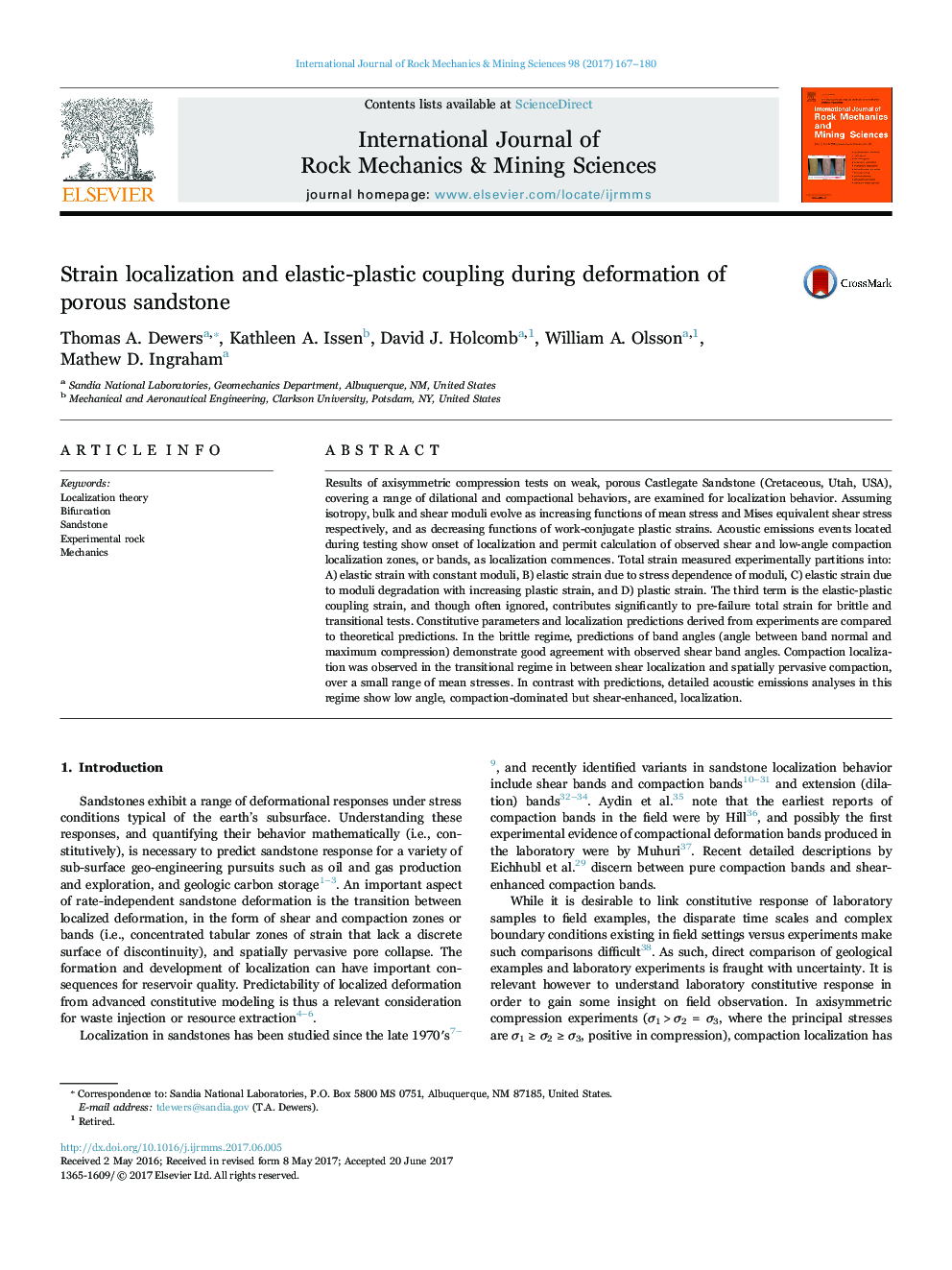| Article ID | Journal | Published Year | Pages | File Type |
|---|---|---|---|---|
| 5020192 | International Journal of Rock Mechanics and Mining Sciences | 2017 | 14 Pages |
Abstract
Results of axisymmetric compression tests on weak, porous Castlegate Sandstone (Cretaceous, Utah, USA), covering a range of dilational and compactional behaviors, are examined for localization behavior. Assuming isotropy, bulk and shear moduli evolve as increasing functions of mean stress and Mises equivalent shear stress respectively, and as decreasing functions of work-conjugate plastic strains. Acoustic emissions events located during testing show onset of localization and permit calculation of observed shear and low-angle compaction localization zones, or bands, as localization commences. Total strain measured experimentally partitions into: A) elastic strain with constant moduli, B) elastic strain due to stress dependence of moduli, C) elastic strain due to moduli degradation with increasing plastic strain, and D) plastic strain. The third term is the elastic-plastic coupling strain, and though often ignored, contributes significantly to pre-failure total strain for brittle and transitional tests. Constitutive parameters and localization predictions derived from experiments are compared to theoretical predictions. In the brittle regime, predictions of band angles (angle between band normal and maximum compression) demonstrate good agreement with observed shear band angles. Compaction localization was observed in the transitional regime in between shear localization and spatially pervasive compaction, over a small range of mean stresses. In contrast with predictions, detailed acoustic emissions analyses in this regime show low angle, compaction-dominated but shear-enhanced, localization.
Keywords
Related Topics
Physical Sciences and Engineering
Earth and Planetary Sciences
Geotechnical Engineering and Engineering Geology
Authors
Thomas A. Dewers, Kathleen A. Issen, David J. Holcomb, William A. Olsson, Mathew D. Ingraham,
